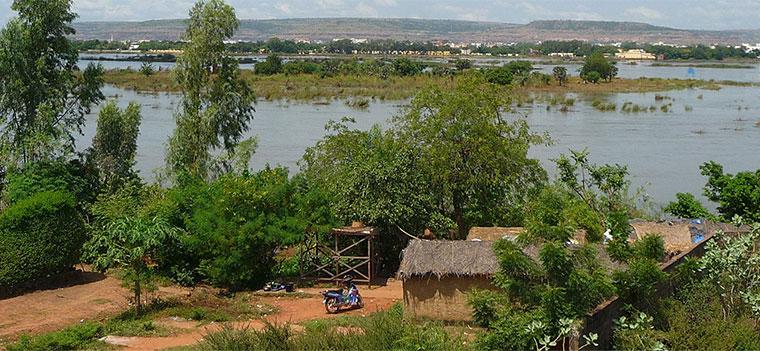Niger, ranked last out of 187 countries in the 2014 Human Development Index, is home to approximately 17 million people and has a rapidly growing population—almost 3.3% per year. In April 2011, the landlocked, African nation finally saw political stabilization and now has an unprecedented opportunity to accelerate economic development, reduce poverty, and boost shared prosperity. The start of oil production in November 2011 and large scale investments in the uranium sector promise to boost growth while providing critical resources for the Government’s development agenda. Taking advantage of these opportunities, however, requires the improvement and expansion of modern services, such as electricity, to develop a competitive and diversified economy.
At 10%, access to electricity services in Niger is one of the lowest in the region. There are very large disparities, ranging from below 1% in some rural areas to a maximum of 50% in the capital Niamey, with frequent power cuts country-wide. Imports of cheap electricity from Nigeria, Niger’s main supply source, have been critical for meeting growing demand over the last decade. However, as development continues and demand grows, the country will need to expand its supply of electricity. In order to address the country’s needs, the Government of Niger has embarked on major investments in domestic power generation and has engaged various other countries to connect its grid to the sub-regional market for electricity. Current projects under development and consideration include the Kandadji multipurpose hydropower project on the Niger River; the NorthCore Regional transmission line that will expand opportunities for electricity imports and exports; a diesel plant and of a coal-based electricity generation plant in Sakaldamna; the hybridization of the many decentralized mini-grids; and, a grid connected solar photovoltaic generation plant that will realize Niger’s immense solar potential.
In order to utilize the energy generated from these projects, investment in new and existing transmission and distribution infrastructure is necessary. The International Development Partners, who support the Government’s efforts to expand access to electricity, are actively involved in the realization of investment projects for transmission and distribution, notably the World Bank and the Agence Française of Developpement. In December 2015, the World Bank’s board of directors agreed to partner with the Government of Niger to tackle these issues with the
Electricity Access Expansion Project for Niger. The International Development Association (IDA) $54.5 credit and $10.5 million grant will address existing distribution network bottlenecks and pending connection requests. The project also provides the financing for the development of a National Electrification Strategy, which will provide a road map to develop access in urban and rural areas in an equitable manner. The benefits are expected to impact 330,000 people, including households, small businesses, local government, and elementary and high schools. The project will also enhance capabilities of the Ministry of Energy and Petroleum (MEP) and NIGELEC, the power utility in Niger, thus laying a solid foundation for expanding electricity services to Niger’s population and to commercial customers.
The World Bank’s Energy Sector Management Assistance Program (ESMAP) provided funding through the Electricity Access Expansion Project for Niger to support MEP and NIGELEC fill important gaps in the policy environment. ESMAP funding provided technical assistance to MEP in order to prepare a short- to medium-term power sector plan, developing demand projections and matching the most favorable electricity supply options to develop a least-cost generation plan for the country. This study identified the feasible supply options that Niger needs to develop in order to make the energy access agenda sustainable.
With ESMAP support, the Bank also worked with MEP to strengthen oversight capacity by creating an energy sector regulatory agency and approving a new electricity law, which are important steps in strengthening the electricity sector’s regulatory framework. The law clearly establishes the roles of the MEP, the regulator, and the utilities, allowing for the opening of the sector to private initiative that will provide new and much needed investment and competition. ESMAP’s funding also facilitated the policy dialogue on efficient tariff methodologies with MEP, NIGELEC, other Government entities, and the International Development Partners. This will be key when developing the tariff methodology by the energy regulator under the context of the budgetary support provided by the World Bank to the Government of Niger.
The Government of Niger has defined an ambitious distribution investment program with the objective of increasing national electricity access to 60% of the population by 2027. The World Bank’s support is helping to define the path to achieve this goal, while ESMAP aided in building the capacity within the necessary institutions to make it possible.
